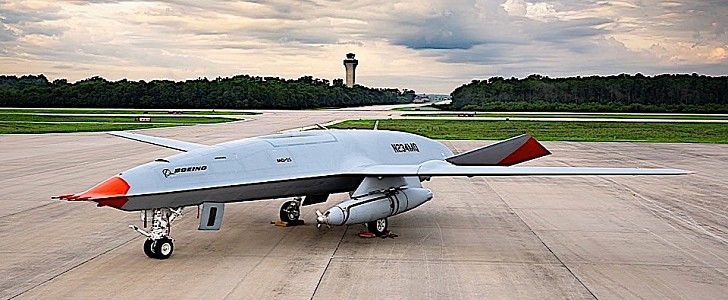They call it the MQ-25 Stingray, and it is one of the most recent and advanced drones being developed for use by the U.S. military. Although still in testing stages, the drone is already so impressive that its maker, Boeing, just committed to opening an entire facility dedicated to its production.
We’ve featured this little piece of technology before, pretty much every time it managed to impress people. We’ve seen it fly ever since 2019, and most recently successfully conducting autonomous refueling of a U.S. Navy F/A-18 Super Hornet.
The place where this thing is currently being tested by Boeing and the Navy is the MidAmerica St. Louis airport in Illinois, and the same site was chosen for the construction of a facility capable of accommodating the production lines for it.
According to Boeing, a 300,000 square-foot (27,870 square meters) facility should be up and running there by 2024, employing at first 150 mechanics, engineers and support staff, and then possibly doubling that.
According to the available info, the Navy plans to order at least 70 MQ-25s and use them as their first carrier-based unmanned aircraft “to help extend the range of the carrier air wing.” The first seven of that batch, and two more ground test vehicles, are already in production elsewhere.
The MQ-25 Stingray is powered by a Rolls-Royce engine that gives it a range of about 580 miles (930 km), when loaded with 15,000 lbs (6,800 kg) of fuel tucked inside something called aerial refueling store (ARS).
You can see the drone in action in the video below, released by Boeing at the beginning of August and showing the Stingray refueling the said Hornet. The images were captured from two chase planes (which in this case are a King Air 300 and an A4) for a greater perspective.
The place where this thing is currently being tested by Boeing and the Navy is the MidAmerica St. Louis airport in Illinois, and the same site was chosen for the construction of a facility capable of accommodating the production lines for it.
According to Boeing, a 300,000 square-foot (27,870 square meters) facility should be up and running there by 2024, employing at first 150 mechanics, engineers and support staff, and then possibly doubling that.
According to the available info, the Navy plans to order at least 70 MQ-25s and use them as their first carrier-based unmanned aircraft “to help extend the range of the carrier air wing.” The first seven of that batch, and two more ground test vehicles, are already in production elsewhere.
The MQ-25 Stingray is powered by a Rolls-Royce engine that gives it a range of about 580 miles (930 km), when loaded with 15,000 lbs (6,800 kg) of fuel tucked inside something called aerial refueling store (ARS).
You can see the drone in action in the video below, released by Boeing at the beginning of August and showing the Stingray refueling the said Hornet. The images were captured from two chase planes (which in this case are a King Air 300 and an A4) for a greater perspective.
















